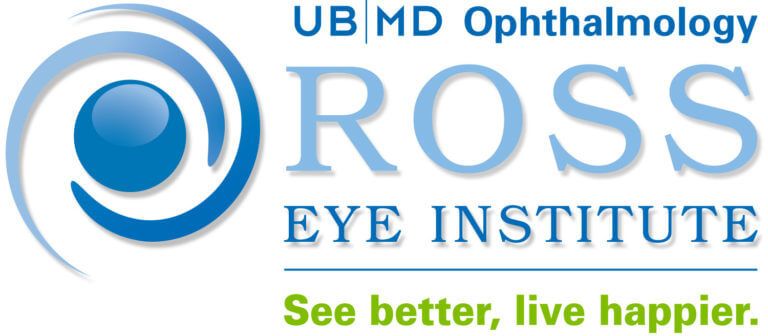Glaucoma: The Silent Thief of Sight
January is National Glaucoma Awareness Month, making this month the best time to learn more about one of the leading causes of blindness worldwide and what you can do to help protect your vision.
Due to its often-unnoticeable symptoms early in its development, glaucoma is commonly dubbed the “silent thief of sight” because by the time most people are diagnosed, they are already suffering from irreversible vision damage. The Glaucoma Research Foundation reports that a person can lose up to 40 percent of their vision before they even notice they have a problem, making awareness and early detection critical to maintaining vision.
What Is Glaucoma Of The Eye?
Glaucoma is an eye condition that results in progressive damage to the optic nerve, a bundle of over 1 million individual nerve endings that broadcasts visual signals from the eye to the brain.
The damage to the optic nerve by glaucoma is associated with an increase in pressure inside of the eye, also called intraocular pressure. This pressure increase can then cause nerve tissue loss that may ultimately result in visual impairment or, if left untreated for a long period of time, even complete blindness. Although it can be managed with surgery and medication, glaucoma has no known cure.
While high intraocular pressure is the primary risk factor for glaucoma, it is not the only factor that causes glaucoma to progress or worsen. Furthermore, not everyone who experiences high eye pressure will develop glaucoma and, conversely, people who do not have high eye pressure sometimes develop glaucoma. It all depends on the individual person’s optic nerve and how much stress it can sustain. Therefore, glaucoma eye damage is more often not the result of overall high pressure in the eyes, but pressure that is too high for a particular individual’s optic nerve.
Who Is At Risk?
Simply put, everyone is at some risk for developing glaucoma. The primary risk factor for glaucoma – as is true with many ocular conditions – is age. Of the more than 3 million Americans diagnosed with glaucoma, the majority are over 40 years old.
That said, some people have a greater risk than others to develop glaucoma. People who have a family history of the disease, high eye pressure, past traumatic eye injuries, long-term corticosteroid use, thin corneas, diabetes or hypertension have a higher chance of developing the condition, as are people of African American or Latin American heritage.
Types Of Glaucoma
Human eyes are constantly producing and secreting a plasma-like liquid known as aqueous humor, which helps maintain the shape of the eye and nourish eye structures, while also serving as a lubricant between the lens and the cornea. However, for as much as is produced, there must also be an equal amount drained to avoid a buildup of excess fluid. For people with glaucoma, their eyes are unable to properly drain this fluid. As a result, intraocular pressure builds, putting increased stress on the optic nerve.
Primary Open-Angle Glaucoma
Most people that are diagnosed have primary open-angle glaucoma. Primary open-angle glaucoma is characterized by the gradual loss of vision over time due to slowly increasing eye pressure. This type of glaucoma can be devastating because people often have no idea they are experiencing problems until they have already sustained serious damage to their vision.
In the early stages of glaucoma, patients are often asymptomatic. This is typically because glaucoma causes peripheral vision loss first, which can be hard for a person to notice. It is only in the later stages of glaucoma that people can start to lose their central vision, which is the vision we use to drive and watch television. Unfortunately, this vision loss is irreversible, so it is important to treat glaucoma as early as possible.
Acute Angle-Closure Glaucoma
While primary open-angle accounts for the majority of glaucoma diagnoses, the less common, more time-sensitive form of the condition is acute angle-closure glaucoma. In this form, the cause is still the buildup of excess intraocular pressure. However, the way and speed at which it develops is vastly different. In acute angle-closure glaucoma, the drainage angle between the iris and cornea becomes completely blocked, creating a sudden and rapid buildup of intraocular pressure.
Acute angle-closure glaucoma develops quickly and presents with substantially more immediate symptoms. Some of these include suddenly blurred vision, severe eye pain, nausea, headaches, vomiting and seeing halos or rainbow rings around lights. The more prominent symptoms associated with this form of glaucoma cannot be ignored and immediate action is necessary to avoid serious vision damage or blindness.
Secondary Glaucoma
In addition to these two primary forms, there are a number of different forms of secondary glaucoma where the cause of the increase of intraocular pressure is known and identifiable. Secondary forms can be caused by traumatic eye injuries, inflammation, medications like corticosteroids or the abnormal formation of new blood vessels in the eye due to ongoing diseases such as diabetes. And, although rare, there is also a congenital form of glaucoma – meaning it was present at birth – that can develop in babies during the pre-natal period. You can learn more about each of these types from the Glaucoma Research Foundation.
Glaucoma Diagnosis
The only way to effectively screen for glaucoma is through a complete eye examination. Checking for high eye pressure alone is not sufficient to diagnose glaucoma since every optic nerve can sustain different amounts of stress. For example, some individuals have high natural intraocular pressure levels that can initially appear to indicate glaucoma, but is entirely natural and not a cause for alarm, while other patients may have low pressure associated with the development of glaucoma.
During a full eye exam, an ophthalmologist will not only test eye pressure, but also peripheral vision and the eye’s drainage angle, optic nerve and cornea. By checking all of these different areas of the eye that can be affected by the condition, your doctor is assessing potential damage in parts that may not have surfaced in noticeable ways yet – the classic calling card of glaucoma.
How Is Glaucoma Treated?
The glaucoma eye damage is irreversible and irreplaceable, and the condition cannot be cured. However, that doesn’t mean there aren’t ways to slow or manage its effects.
Glaucoma Medication
Glaucoma can be managed in a few ways. The first, most common way is through eyedrop medications that work to lower eye pressure. Some glaucoma eye medications reduce the production of aqueous humor, while others help fluid pass more easily. No matter which way a certain medication attacks the issue, the goal is to maintain the healthy flow of this fluid while keeping intraocular pressure at acceptable levels.
Glaucoma Surgery – Laser
In addition to the medication route, there are also various surgeries that address and treat glaucoma. Laser surgery is the most common, with two main types of procedures used. The first is known as trabeculoplasty and is used for people with open-angle glaucoma. In this operation, a laser helps the drainage angle work more efficiently. The second type of laser eye surgery is for those with angle-closure glaucoma. In what is called an iridotomy, the surgeon uses a laser to create a small hole in the iris which allows fluid to more freely move, allowing intraocular pressure to decrease.
Glaucoma Surgery – Traditional
There are also non-laser surgical options. The first of those is a trabeculectomy, where a new drainage angle is created by the surgeon in the sclera – the white part of the eye. Doctors can also opt to implant a tiny, artificial drainage device that carries excess fluid to a reservoir in the conjunctiva – the thin membrane covering the inner eyelids – to be absorbed into blood vessels nearby, alleviating high pressure levels.
Don’t Wait Until It’s Too Late
Despite there being no known cure, the treatment options for glaucoma management are promising and effective. However, with the Glaucoma Research Foundation estimating that there could be as many as 3 million undiagnosed cases in the U.S. alone, the need for regular eye exams to detect and diagnose glaucoma early is as important as ever.
Glaucoma is a serious eye condition and requires medical intervention to avoid extensive vision loss, but is only one of a wide range of health conditions that can threaten eyesight as we age. If you have any concerns about your eye health, visit with the professionals at the Ross Eye Institute. Schedule an appointment at any of our three Western New York locations today by calling 716.881.7900.





Contact Us
We will get back to you as soon as possible.
Please try again later.
BUFFALO NIAGARA
F: 716-881-4349
Office Hours:
Monday - Friday: 8:00 am - 4:30 pm
SOUTHTOWNS OFFICE
F: 716-677-6507
Office Hours:
Monday - Friday: 8:00 am - 4:30 pm
BUFFALO NIAGARA
F: 716-881-4349
Office Hours:
Monday - Friday: 8:00 am - 4:30 pm
SOUTHTOWNS OFFICE
F: 716-677-6507
Office Hours:
Monday - Friday: 8:00 am - 4:30 pm


© 2024. Ross Eye Institute.
The Ross Eye Institute website makes every attempt to comply with The Americans with Disabilities Act (ADA) of 1990. If you are using a screen reader and are having problems using this website, please call for assistance.
